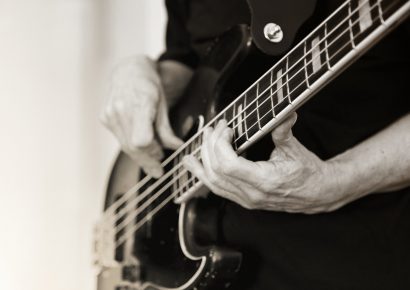
Figure A shows two possible fingerings for G Dorian (G A Bb C D E F G). The first is a box-type pattern, while the second takes a three-notes-per-string approach. Many of you may be familiar with the sound and a number of shapes or positions on the neck, while others will probably have to spend a bit of time getting acquainted.

Practise these slowly, listening to the sound and getting comfortable with the fingerings as a starting point. Next, it’s time to try incorporating them into your improvising. Figure B is a chord progression that can work as a slow funky groove (anything from a bluesy feel through to rock and fusion).

Got a bit of a handle on G Dorian in a few different positions? Let’s try to add some intervallic ideas to make it sound a little less predictable. Figure C breaks up the scale by adding some wider interval leaps. These add some interesting harmonic content and transcend the idea of just playing ascending and descending strictly within the scale/mode. Try it against the chord progression in Figure B to give it some context. Using these intervals highlights the 4th, natural 6th and 9th over Gm7 as a start. Try to create some of your own ideas and step out of the standard box-type shapes you might always use.

Figure D is another example in G Dorian that again adds some stretches and different intervals. Experiment with fingerings to work out the most comfortable route and as always, start slow and get the phrase clear before pushing up the tempo. You’ll hear players such as Tom Quayle, Martin Miller, Tim Miller, Michael Dolce, Luca Mantovanelli, Frank Gambale and Allan Holdsworth open up scales and modes with different patterns and intervals to create super interesting sounds. Think of the possibilities across the whole fretboard with G Dorian, and then consider the fact we haven’t even started changing rhythmic ideas, groupings, string skipping etc. You’re only limited by your creativity and technique, so get practising and see what you can come up with.
Feature image via Austin Prock.

